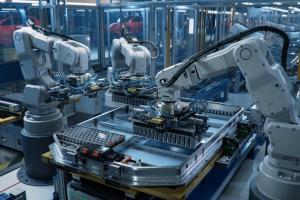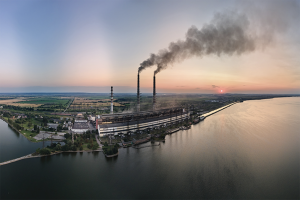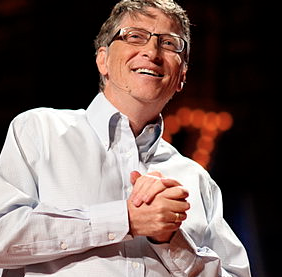
Billionaire and Microsoft chairman Bill Gates, a founder and backer of the fourth-generation nuclear reactor startup TerraPower, moved a step closer to building his first reactor after Reliance Industries, the Indian conglomerate run by Mukesh Ambani, took a minority stake in the new company,
BusinessWeek reported. Reliance already owns the world's biggest oil refinery and India's largest natural gas fields, and as an energy player with global ambitions, Reliance has diversified into U.S. shale gas and is now sizing up similar assets in the resource-rich regions of Canada.
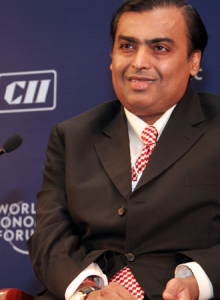
"Reliance has been constantly trying to diversify, they want to be in the whole energy chain," U.R. Bhat, of Dalton Capital Advisors in Mumbai, told
BusinessWeek. "In the state they are now, they have to invest in businesses with big potential, and nuclear has that potential. Nuclear is seen as the energy of the future and it's going to play a huge part."
The Mumbai-based energy explorer and refiner didn't disclose the size of the investment, but Ambani will join the TerraPower's board alongside Bill Gates and venture capitalist Vinod Khosla, both of whose goals are to make nuclear reactors smaller, cheaper and safer than today's nuclear energy sources.
TerraPower met with several potential partners
Before this deal was announced, which took many by surprise, execs from TerraPower had been globe-trotting to visit potential partners in China, France, India, Japan, Korea, and Russia. Earlier this month, Gate's meeting in China with the Ministry of Science and Technology launched a media frenzy of speculation--most articles had a deal in the bag. After he walked away empty-handed,
Dan Yurman at ANS Nuclear Cafe commented:
For their part, the Chinese are already swimming in fast reactor R&D projects and may not have the capacity to take on something so novel as the TerraPower "Traveling wave" concept.
Yurman's "novel" was probably a euphemism, since many of China's projects are already in the demonstration phase. Essentially, they're real. TerraPower had recently completed a reactor redesign so that it could theoretically run untouched for decades on depleted uranium, a spent nuclear fuel.
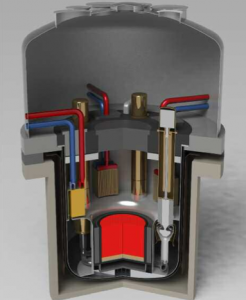
"A cheaper reactor design that can burn waste and doesn't run into fuel limitations would be a big thing," Mr. Gates told the
Wall Street Journal. He also said that TerraPower has verified the theory behind its latest version of a slow-burning reactor through supercomputer simulations and now needs to build a pilot version of the reactor, to evaluate how the metal fuel casings in the core will withstand decades of radioactive bombardment.
Reportedly, Ambani's goal has been to fund the development of an ultra-modern nuclear reactor to revolutionize power generation. Since the two billionaires see eye-to-eye on the energy future, Ambani won't flinch at TerraPower's staggering development costs. According to Gates, the innovative reactor, now stuck at the conceptual stage as a set of evolving computer simulations, may require $1 billion for research and development in the next five years. Later, each reactor will require billions to build.
Future obstacles
TerraPower's huge engineering obstacle and main technical challenge is in the less-glamorous area of materials science. As Gates mentioned, the reactor needs a fuel cladding material that can withstand constant reactor immersion, bombarded by radiation for up to six decades.
TerraPower has been using super computers to simulate how various alloys might react in such a harsh environment, but certification should be a challenge, since the cladding doesn't even exist yet.
Photo: Bill Gates, Steve Jurvetson, Flickr cc
Photo: Mukesh Ambani, World Economic Forum, wikicommons
Graphic: Reactor design, Ash Odedra at TerrPower, via ANS Nuclear Cafe
 Billionaire and Microsoft chairman Bill Gates, a founder and backer of the fourth-generation nuclear reactor startup TerraPower, moved a step closer to building his first reactor after Reliance Industries, the Indian conglomerate run by Mukesh Ambani, took a minority stake in the new company, BusinessWeek reported. Reliance already owns the world's biggest oil refinery and India's largest natural gas fields, and as an energy player with global ambitions, Reliance has diversified into U.S. shale gas and is now sizing up similar assets in the resource-rich regions of Canada.
Billionaire and Microsoft chairman Bill Gates, a founder and backer of the fourth-generation nuclear reactor startup TerraPower, moved a step closer to building his first reactor after Reliance Industries, the Indian conglomerate run by Mukesh Ambani, took a minority stake in the new company, BusinessWeek reported. Reliance already owns the world's biggest oil refinery and India's largest natural gas fields, and as an energy player with global ambitions, Reliance has diversified into U.S. shale gas and is now sizing up similar assets in the resource-rich regions of Canada.
 "Reliance has been constantly trying to diversify, they want to be in the whole energy chain," U.R. Bhat, of Dalton Capital Advisors in Mumbai, told BusinessWeek. "In the state they are now, they have to invest in businesses with big potential, and nuclear has that potential. Nuclear is seen as the energy of the future and it's going to play a huge part."
The Mumbai-based energy explorer and refiner didn't disclose the size of the investment, but Ambani will join the TerraPower's board alongside Bill Gates and venture capitalist Vinod Khosla, both of whose goals are to make nuclear reactors smaller, cheaper and safer than today's nuclear energy sources.
"Reliance has been constantly trying to diversify, they want to be in the whole energy chain," U.R. Bhat, of Dalton Capital Advisors in Mumbai, told BusinessWeek. "In the state they are now, they have to invest in businesses with big potential, and nuclear has that potential. Nuclear is seen as the energy of the future and it's going to play a huge part."
The Mumbai-based energy explorer and refiner didn't disclose the size of the investment, but Ambani will join the TerraPower's board alongside Bill Gates and venture capitalist Vinod Khosla, both of whose goals are to make nuclear reactors smaller, cheaper and safer than today's nuclear energy sources.
 "A cheaper reactor design that can burn waste and doesn't run into fuel limitations would be a big thing," Mr. Gates told the Wall Street Journal. He also said that TerraPower has verified the theory behind its latest version of a slow-burning reactor through supercomputer simulations and now needs to build a pilot version of the reactor, to evaluate how the metal fuel casings in the core will withstand decades of radioactive bombardment.
Reportedly, Ambani's goal has been to fund the development of an ultra-modern nuclear reactor to revolutionize power generation. Since the two billionaires see eye-to-eye on the energy future, Ambani won't flinch at TerraPower's staggering development costs. According to Gates, the innovative reactor, now stuck at the conceptual stage as a set of evolving computer simulations, may require $1 billion for research and development in the next five years. Later, each reactor will require billions to build.
"A cheaper reactor design that can burn waste and doesn't run into fuel limitations would be a big thing," Mr. Gates told the Wall Street Journal. He also said that TerraPower has verified the theory behind its latest version of a slow-burning reactor through supercomputer simulations and now needs to build a pilot version of the reactor, to evaluate how the metal fuel casings in the core will withstand decades of radioactive bombardment.
Reportedly, Ambani's goal has been to fund the development of an ultra-modern nuclear reactor to revolutionize power generation. Since the two billionaires see eye-to-eye on the energy future, Ambani won't flinch at TerraPower's staggering development costs. According to Gates, the innovative reactor, now stuck at the conceptual stage as a set of evolving computer simulations, may require $1 billion for research and development in the next five years. Later, each reactor will require billions to build.


